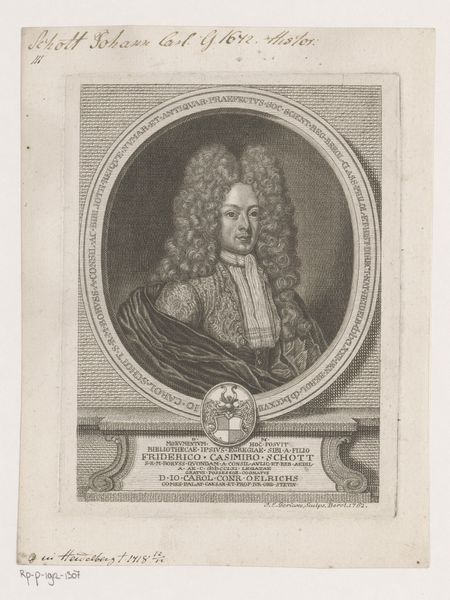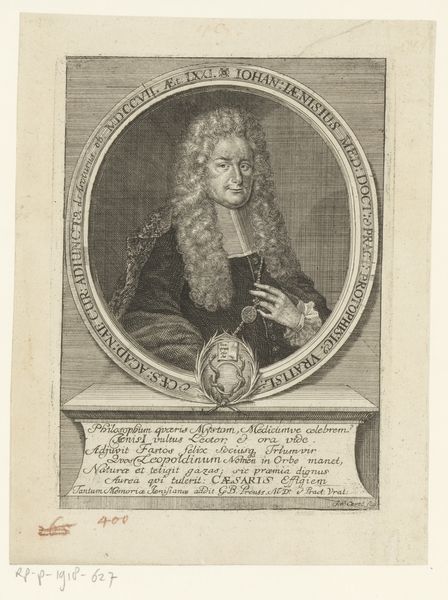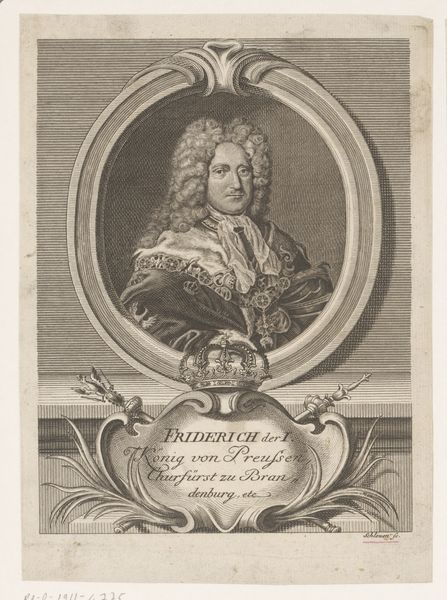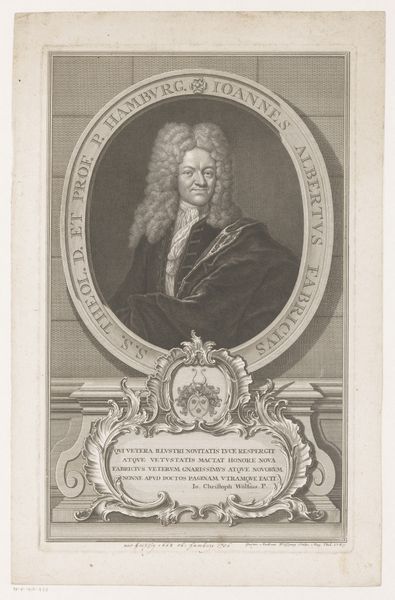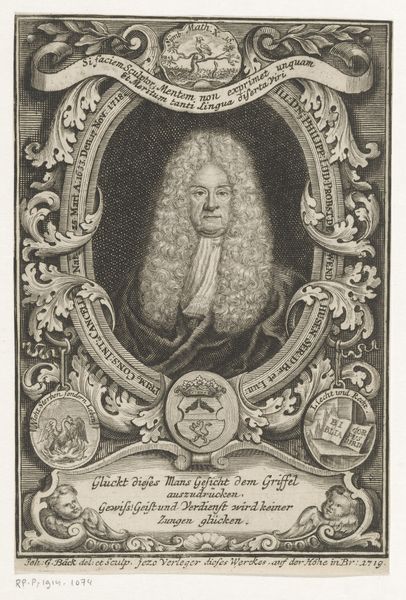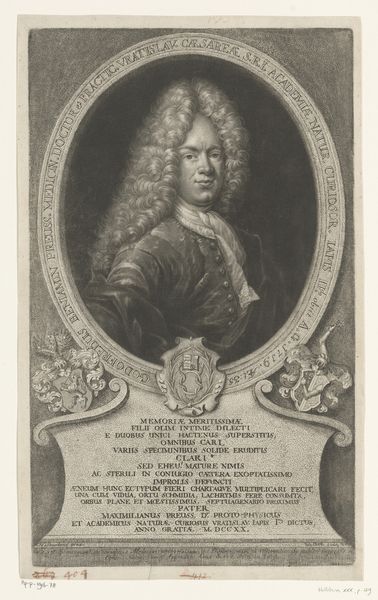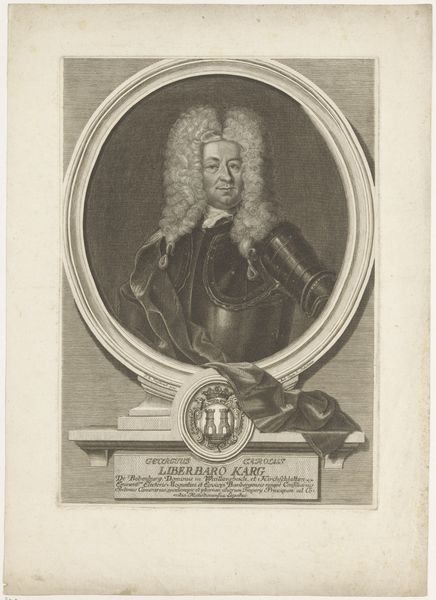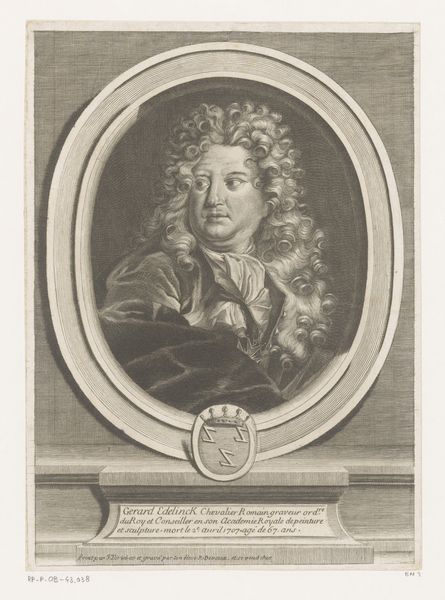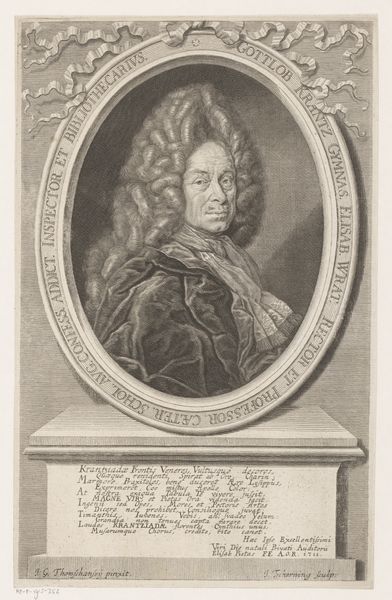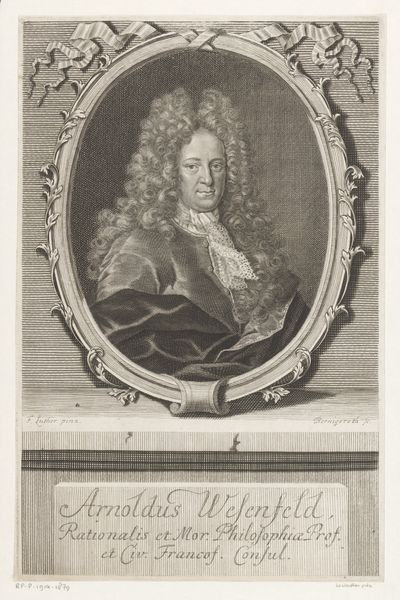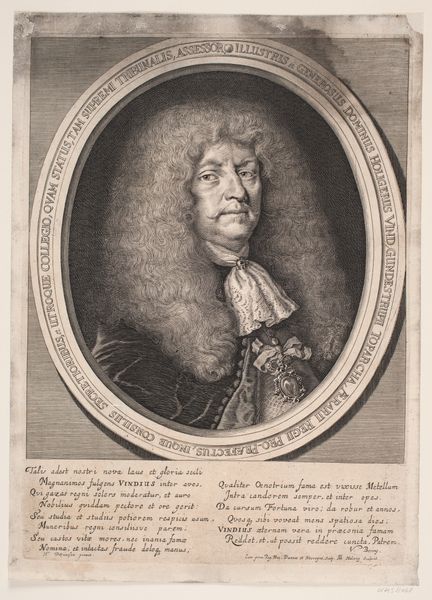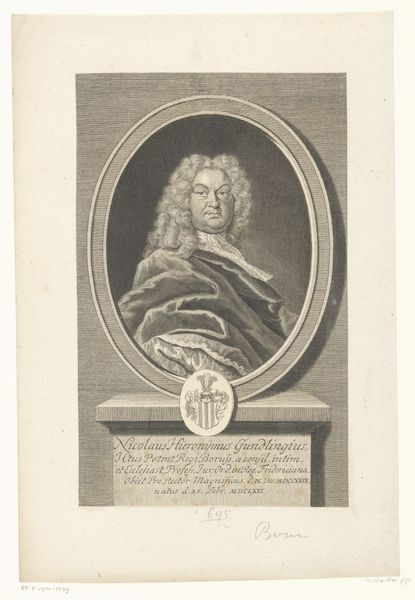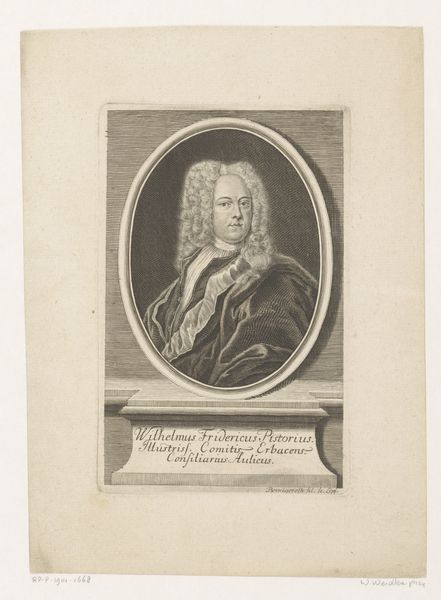
engraving
#
portrait
#
baroque
#
academic-art
#
engraving
Dimensions: height 196 mm, width 154 mm
Copyright: Rijks Museum: Open Domain
Christian Fritzsch made this portrait of Carl Gustaf Dücker using engraving, a printmaking technique, sometime in the 18th century. Engraving involves using a tool called a burin to carve lines directly into a metal plate, which is then inked and printed. The precision and detail seen here, especially in the rendering of Dücker's elaborate wig and fur-lined robes, speak to Fritzsch's skill. But consider also the labor involved, the hours spent meticulously incising lines to create tonal variations and textures. This connects the print to broader social dynamics of labor and production. Prints like this one were relatively reproducible, and so played an important role in disseminating images and ideas widely, but also in establishing status. The choice of engraving as a medium, with its inherent qualities of line and precision, underscores the sitter's position of power and refinement. It is a reminder that even seemingly simple images can carry complex social and cultural meanings.
Comments
No comments
Be the first to comment and join the conversation on the ultimate creative platform.
